Sea Anemone Facts: All You Need to Know About Sea Anemones

Sea anemones are known as the flowers of the sea which is a well-deserved name. However, sea anemones are not a plant but an animal and there are more to anemones than you might think. In this article, we dive into anemones and reveal some incredible facts about them too!
What is a Sea Anemone?
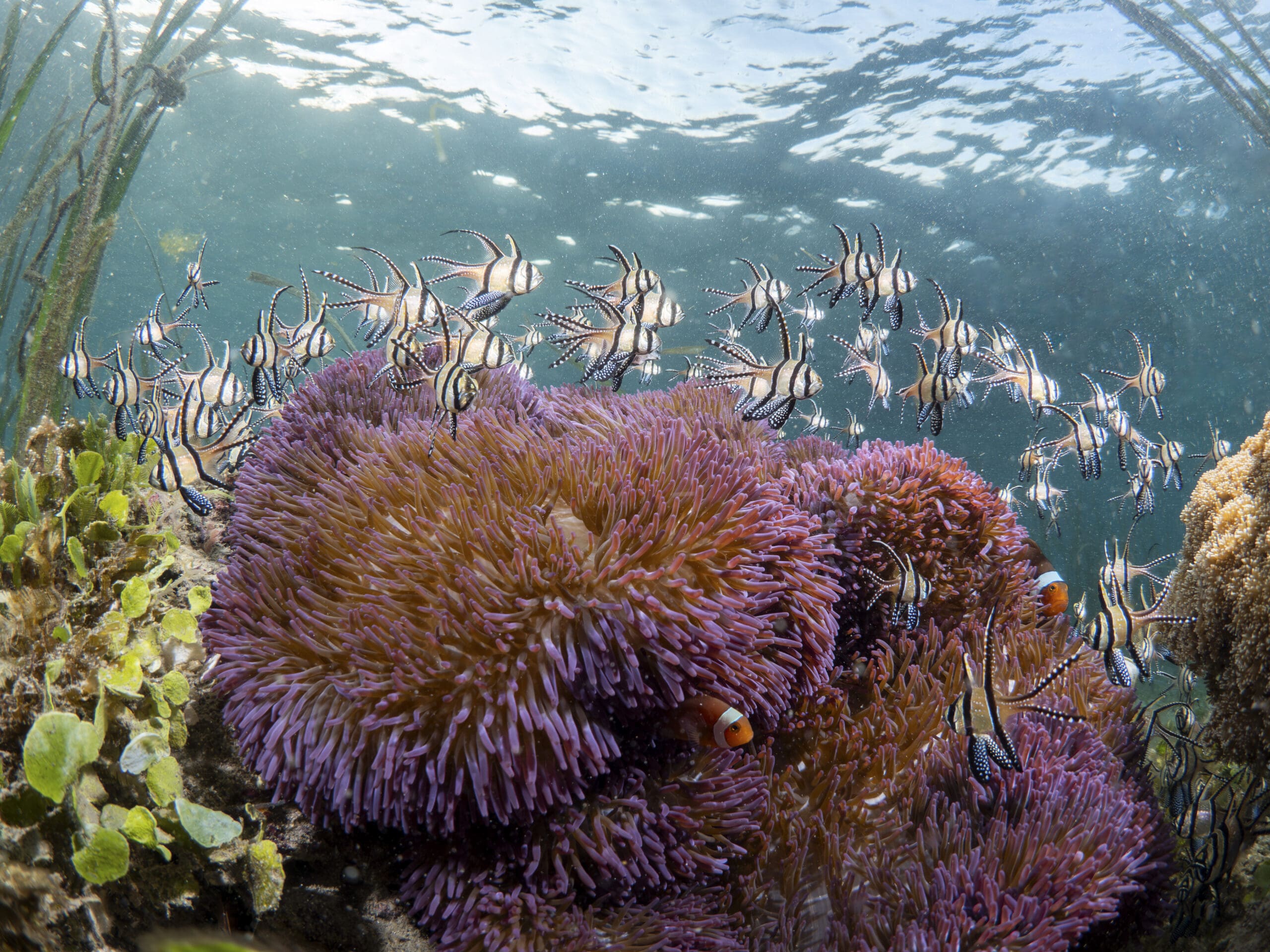
Sea anemones are part of a family of sea creatures known as Actiniaria. Members of this family are characterized by having soft bodies and the ability to sting, this makes anemones close relatives of jellyfish and coral. There are over 1,000 species of anemone found around the world.
Similar to corals, anemones are polyps with a tube like body and a central mouth. Unlike corals, however, a sea anemone’s mouth is surrounded by tentacles that give them a flower like appearance. The number, length and color of the tentacles vary from species to species.
How Do Sea Anemones Move?
Anemones have what is known as a ‘sticky foot’ that allows them to anchor themselves on the reef or other solid surfaces – such as the side of a wreck. Once anchored and comfortable, sea anemones do not tend to move and will stay in the same place. They are able to move around by flexing their bodies but will usually only do so due to a significant environmental change.
Why Do Anemones Close Up?
Anemones are known to pull themselves into a ball when under threat – this could be from sea predators or from strong currents. By closing up the anemone is better able to protect its tentacles. Certain species of anemone will also close up during the night and open again in the daylight.
What do Sea Anemones Eat?
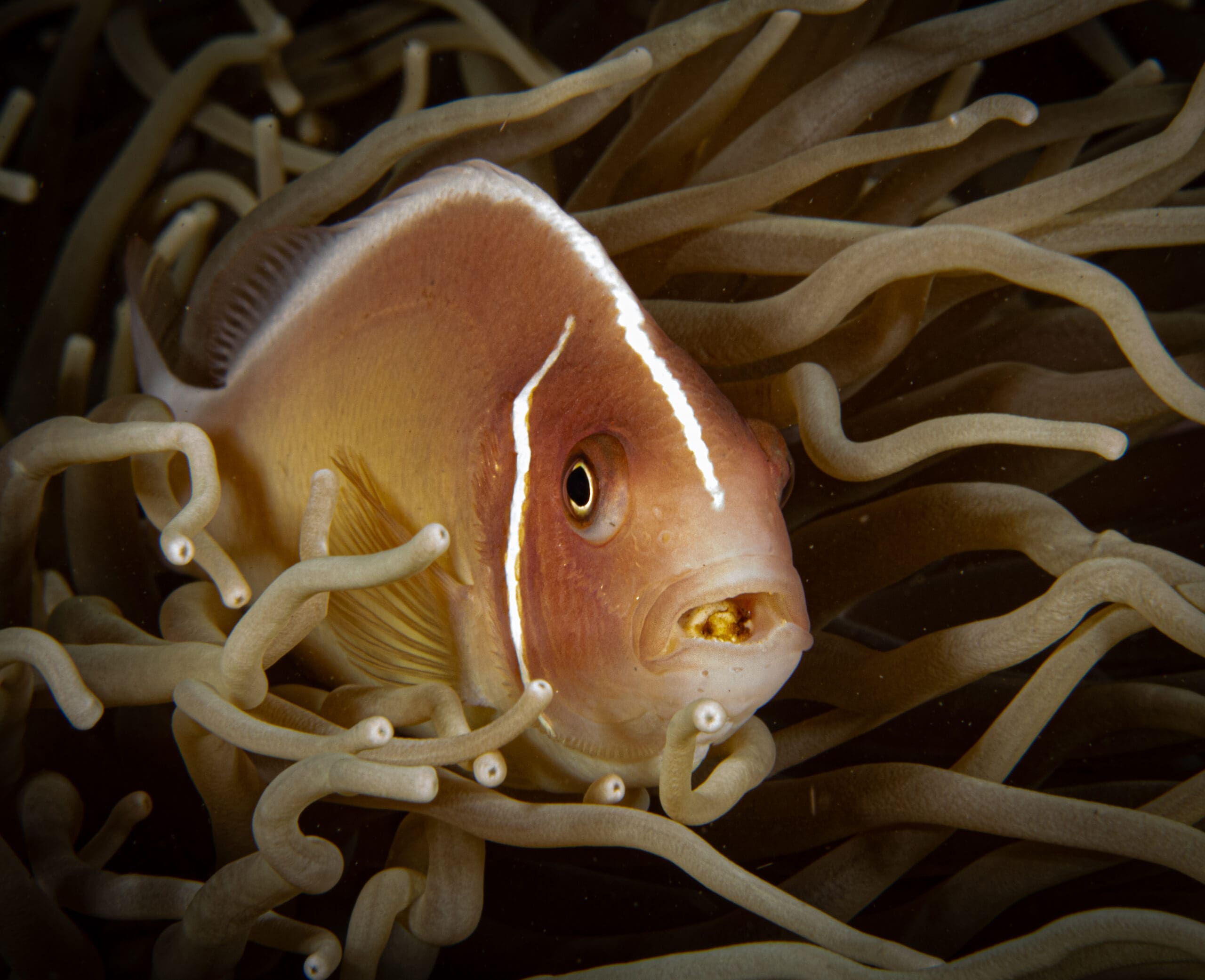
Despite spending most of their lives in a stationary position, sea anemones are a surprising predator. Rather than actively hunting they wait for their unsuspecting prey to pass by. They are carnivores and feed on plankton, small fish and other nutrients that may be passing in the current.
In order to capture their prey, the anemone uses its tentacles to fire a paralysing injection of venom. Once the injection has hit its target, the anemone uses its tentacles to snatch the victim into its mouth. This method of feeding combined with its stinging tentacles means that sea anemones have few predators.
Sea Anemones and Symbiosis
While being predatory, anemones are also highly symbiotic and form relationships with multiple other sea creatures.
- Anemonefish – Anemonefish are one of the few fish that are equipped with a mucus membrane that protects them from the anemone’s stinging tentacles. The anemone fish will clean (and feed) on parasites that could be problematic for the anemone. In return, the anemone provides the fish with a safe home and the protection of its tentacles.
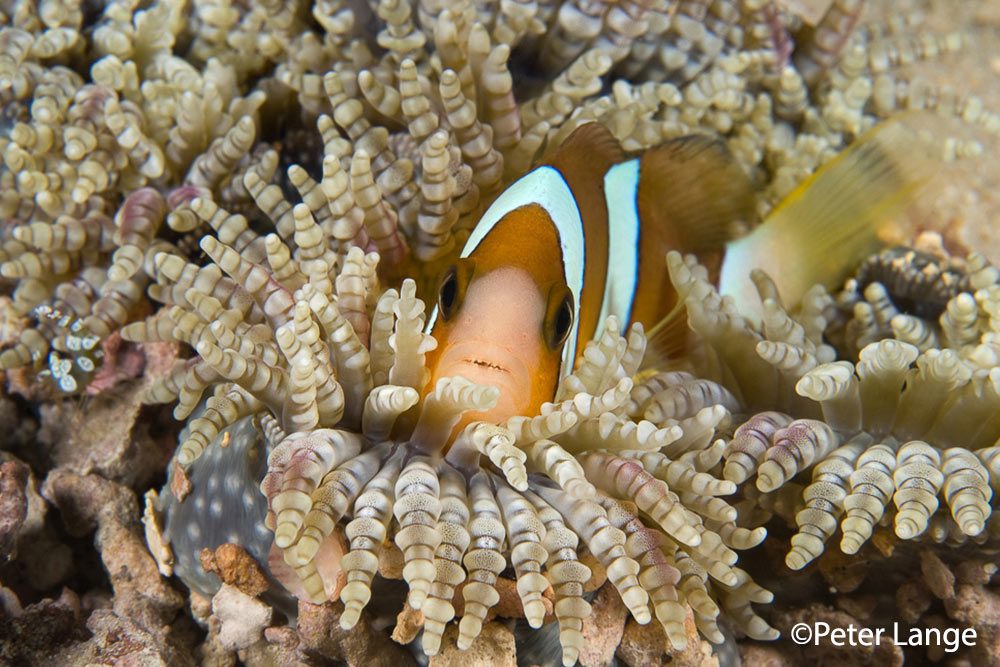
- Porcelain Crabs – If you take a look down to the base of the anemone’s tentacles you might just find a porcelain crab! These minute crabs work with the anemones in the same way as anemonefish.
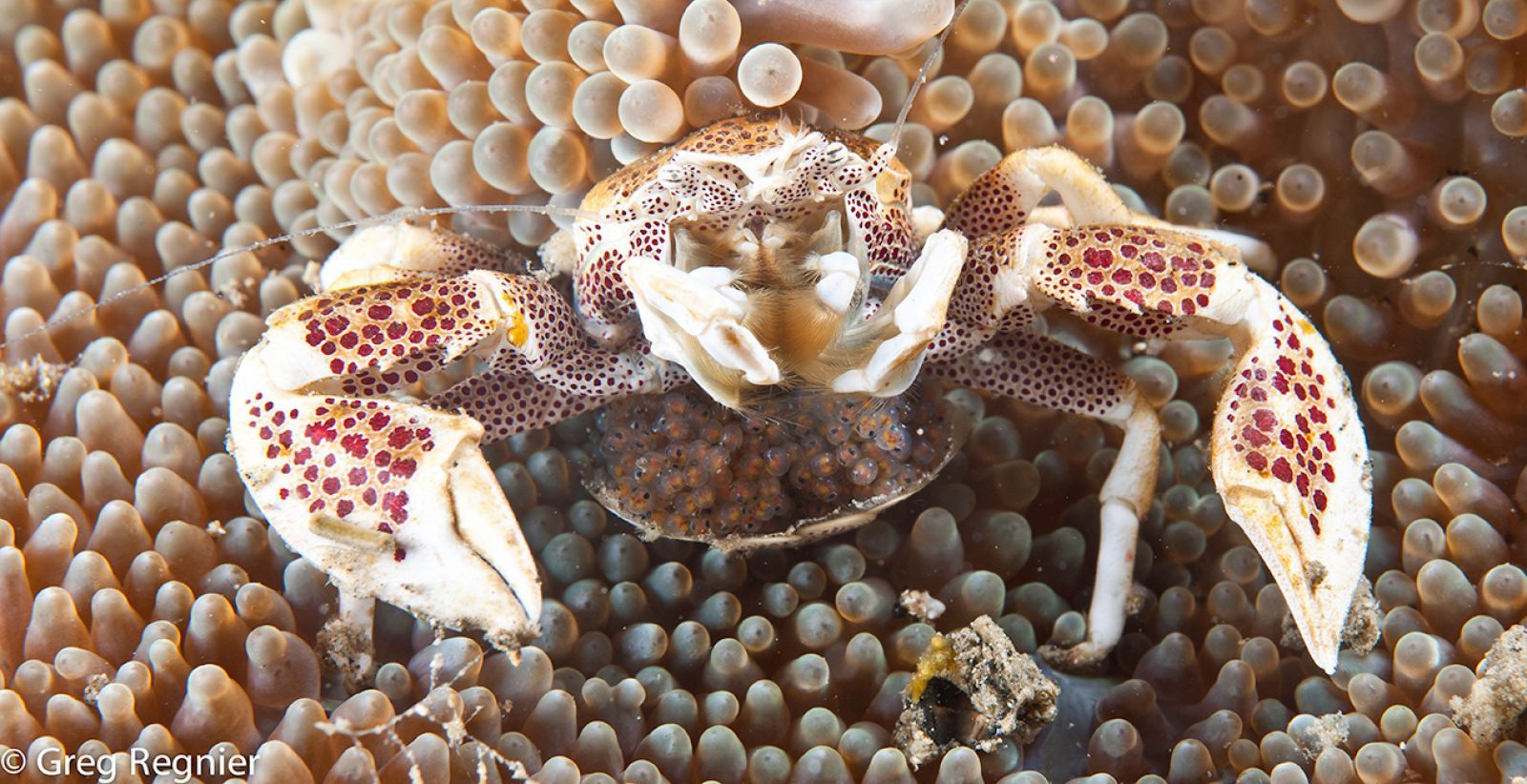
- Green Algae – Some anemones, like their coral cousins, establish symbiotic relationships with green algae. The anemone provides the algae safe harbor and exposure to sunlight while in return the anemone receives oxygen and sugar, the bi-products of the algae’s photosynthesis.
- Commensal Shrimps – These tiny little crustaceans are also not affected by the anemone’s tentacles and can move freely within it. They help to keep the anemone clean – lookout for sexy shrimp, cleaner shrimps and Periclimenes shrimps.
- One of the most unique symbiotic relationships of the marine world is the one between boxer crabs and the anemone Triactis producta. The boxer crab carries these highly venomous anemones in its claws to use as a deadly ‘boxing glove’ that it can use to defend itself against predators!
Other Facts About Sea Anemones…
Here are some more fun facts about sea anemones…
- Sea anemones can reproduce on their own, they split themselves in half (asexual reproduction) to create a new offspring. This is why around some of our dive sites you will see ‘carpets’ of anemones.
- Sea anemones that are well rooted can live up to 100 years – this makes them one of the longest living of all sea creatures!
- Sea anemones have no eyes or ears and rely on their tentacles to sense and capture their meals.
Did you know that we have “underwater galleries” on our website? Take a look and explore more about the anemones we have in Lembeh!
BOOK YOUR STAY WITH LEMBEH RESORT
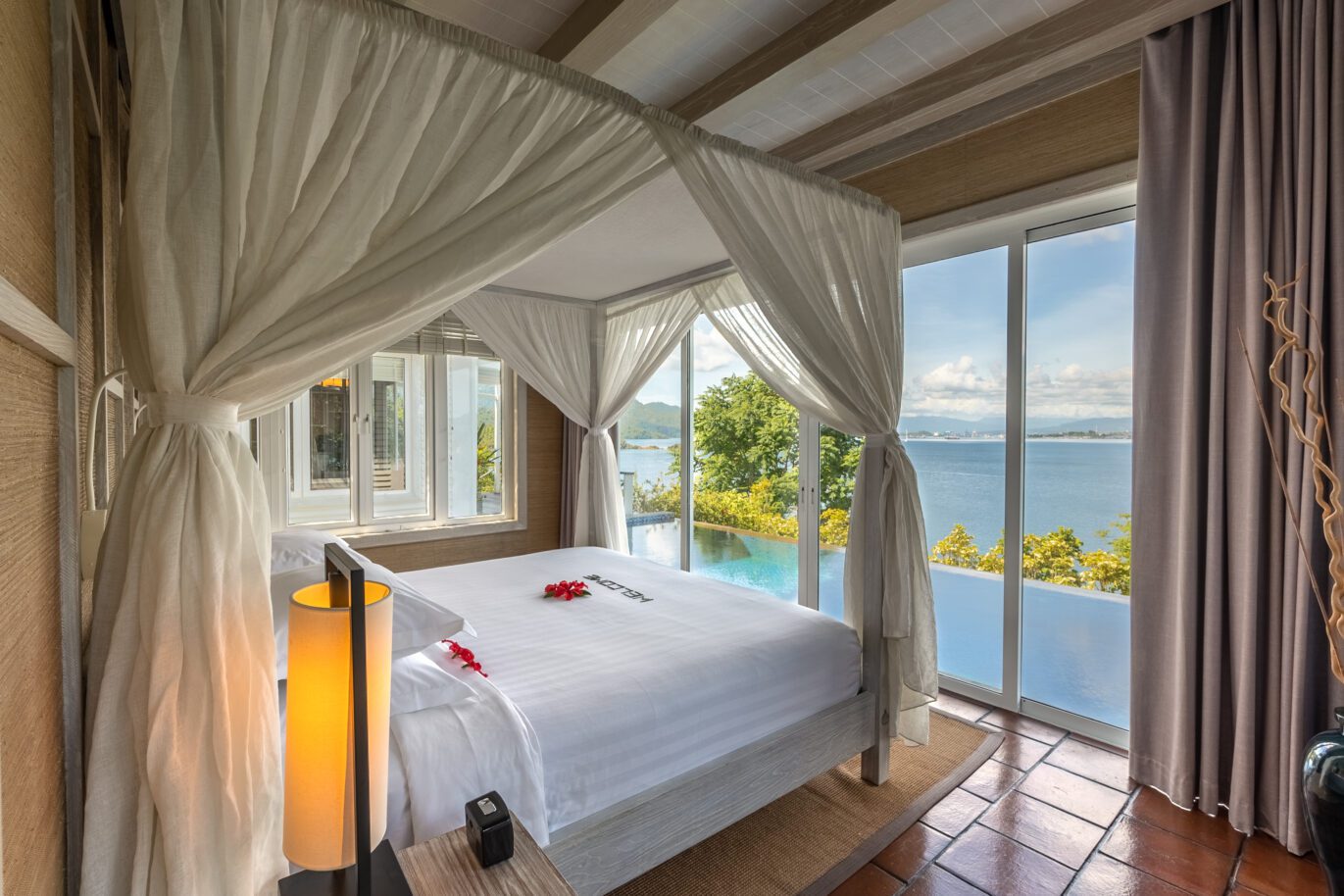
Lembeh Resort Cliffside Villa Bedroom
If you are ready to book your stay with us – or would like more information about our rates and availability contact us at reservations@LembehResort.com.
Our reservations team looks forward to assisting you!
FURTHER READING
Learn more! If you enjoyed reading this article, you may also enjoy some of our other articles about the unique marine life found in the Lembeh Strait.
Pygmy Seahorses In The Lembeh Strait
The Hairy Shrimp: Phycocaris simulans
Colors And Combat: Exploring The Tiger Mantis Shrimp In Lembeh



